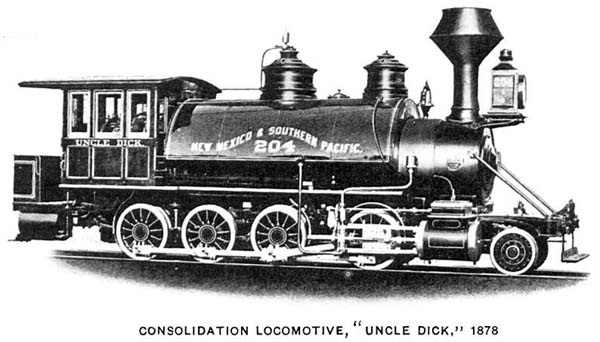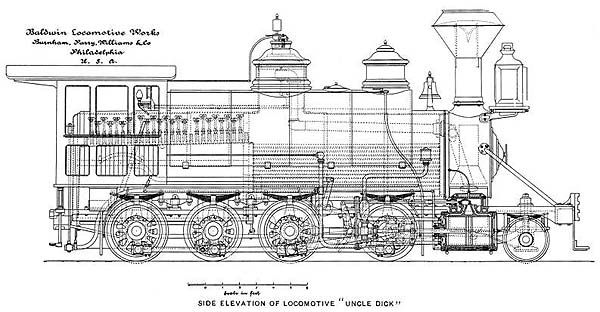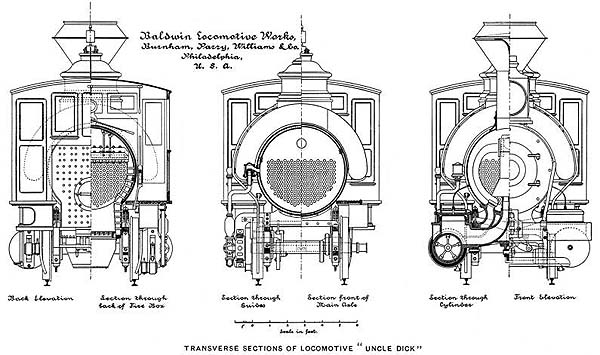|
At this time construction was in progress on the New Mexico and Southern Pacific division of the line. Previous to the completion of the tunnel at Raton Pass, near the New Mexico State line, the mountains were crossed by a "switch back" two and three-quarters miles long, having grades of six per cent. (316.8 feet per mile) combined with curves of sixteen degrees. To operate on this section of track the Baldwin Locomotive Works in 1878, built a consolidation locomotive of exceptional power, which at that date, was the largest engine constructed in the practice of the Works. This locomotive bore the road number 204, and was named "Uncle Dick." It had cylinders twenty inches in diameter by twenty-six inches stroke; the driving wheels being forty-two inches in diameter. With 130 pounds steam pressure the tractive power would thus be 27,400 pounds. The boiler was straight top, built of steel throughout. It was fifty-eight inches in diameter, and contained 213 tubes, two inches in diameter and ten feet eleven and three-quarters inches long. The firebox was 119 and one-eighth inches long by thirty-three and three-eighths inches wide, with a grate area of twenty-seven and four-tenths square feet. The total heating surface was 1376 square feet, the firebox contributing 153 square feet, and the tubes 1223 square feet. The first and third pairs of driving wheels had plain tires, so that while the driving wheelbase was fourteen feet nine inches, the rigid wheelbase was but nine feet; the total wheelbase being twenty-two feet ten inches. The engine had a saddle tank of 1200 gallons capacity on its boiler. As used on the road a separate tender was also provided, having an additional capacity for 2500 gallons. The total weight of the engine was about 115,000 pounds, of which 100,000 pounds were carried on the driving wheels. The illustration on page 5 (see Page 5 illustration below) and the reproductions of the drawings on pages 6 (below) and 7 (below), clearly show the principal features of the design.
Page 5 illustration
Page 6 illustration
Page 7 illustration This locomotive did efficient work, hauling on an average seven cars weighing, loaded, 43,000 pounds each, over the six per cent. grade; the tender weighing about 44,000 pounds additional. On one occasion nine loaded cars were hauled. In a day of twelve hours, the "Uncle Dick" usually moved forty-six loaded cars over the switchback from the north to the south side, bringing back as many in return. In comparison two "American type" locomotives coupled together could move only thirty-four cars each way per day, so that the Consolidation engine was more than equal in capacity to two standard road engines, the cost for fuel and engine service being but little more than for one American type locomotive. |










